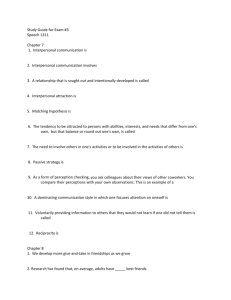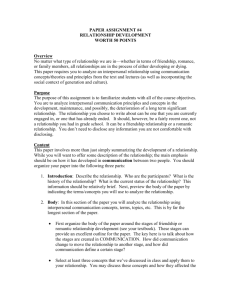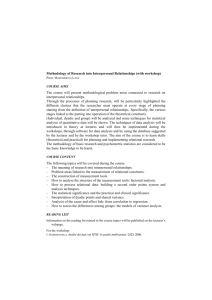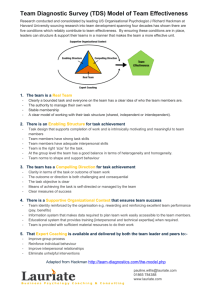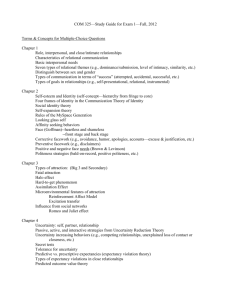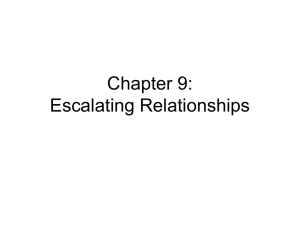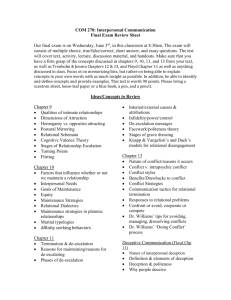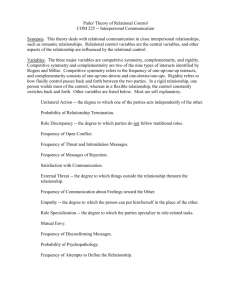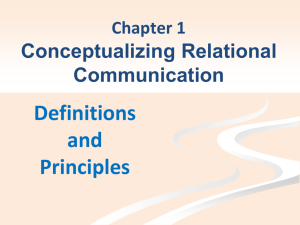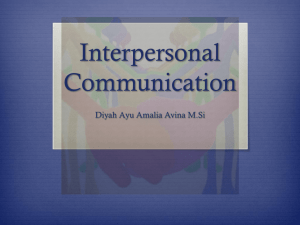Relational Development Types of Relationships William Schutz's
advertisement
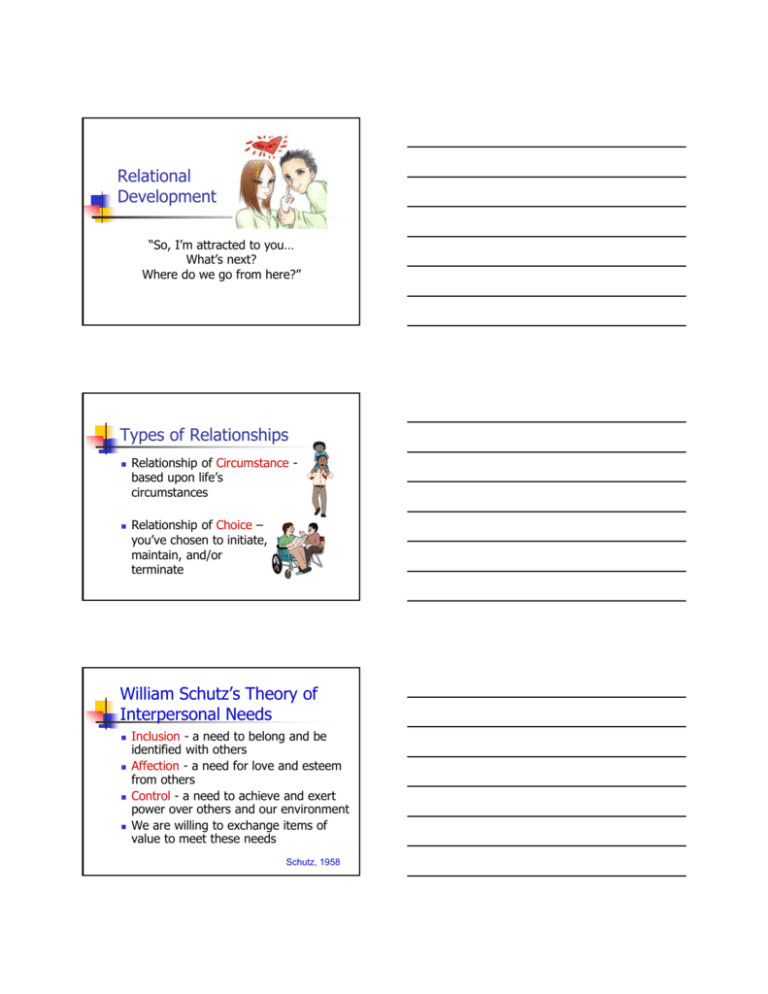
Relational Development “So, I’m attracted to you… What’s next? Where do we go from here?” Types of Relationships Relationship of Circumstance based upon life’s circumstances Relationship of Choice – you’ve chosen to initiate, maintain, and/or terminate William Schutz’s Theory of Interpersonal Needs Inclusion - a need to belong and be identified with others Affection - a need for love and esteem from others Control - a need to achieve and exert power over others and our environment We are willing to exchange items of value to meet these needs Schutz, 1958 Interpersonal Attraction The degree to which you want to form or maintain an interpersonal relationship. Short-term vs. Long-term Short-term: What interests us earliest Potential for developing an interpersonal relationship Long-term: Motivation to maintain or escalate an interpersonal relationship Interpersonal Attraction Physical appearance/characteristics Matching hypothesis Proximity (propinquity) Similarity Social similarity Task & professional similarity Background similarity Attitude & value similarity Other Influences on Interpersonal Attraction Personality fit (complementary needs) Reciprocal Liking Credibility/Competency/ Charisma Relationship Potential Self Disclosure How do I find out about you? (Uncertainty Reduction) We want to increase predictability by reducing the unknown Uncertainty Reduction Strategies: Passive – observation Active- asking others Interactive – ask the person(s) Interpersonal Power The ability to influence another person in the direction we desire It exists in all interactions and all relationships It is derived from an individual’s ability to meet another person’s needs Everyone has power It is circumstantial It is negotiated within relationships Types of Power Relationships Complementary relationships Symmetrical relationships Competitive symmetric Submissive symmetric Parallel relationships Power Resources Power Resource - anything that enables individuals to: move toward their own goals, or interfere with another’s actions Primary Power Resources Legitimate Authority Personal Qualities Expertise Rewards & Punishments Information Relational Development All relationships go through various stages, Up and Down Outsiders can often tell what stage a relationship is in, by observing the interpersonal communication There are turning points in relationships Causal Reflective Models of Relational Development Two basic models Staircase (Knapp) Elevator (Beebe, Beebe & Redmond) Lots of similarities between the models BB&R’s Elevator Model of Relational Development Intimacy “Going up?” “Going down?” Relational Escalation Best Friend/ Lover/ Spouse Close Friend 5 Intimacy 4 Intensification 3 Exploration Friend 2 Acquaintance Acquaintance 1 Preinteraction Awareness Stranger “Going up?” Relational De-Escalation 5 Turmoil OR Stagnation 4 Deintensification 3 Individualization 2 Separation 1 Post‐Separation Effects “Going down?” Movement Within and Between Stages/Floors Intimacy is not the only goal of relationships Not all relationships move through all 10 steps Movement between steps is generally sequential Movement occurs within stages Relationships are constantly changing Movement is always to a new place Unilateral or Bilateral Direct or Indirect Disengagement Strategies Avoidance/Withdrawal Physical & emotional withdrawal Relational ruse Manipulation Pseudo de-escalation Cost-escalation Make other feel guilty for wanting you to stay Leslie Baxter, 1984 Positive Tone Take the blame Lessons learned Open Confrontation Direct dump Justification Nobody’s fault Blame game Negotiated farewell
